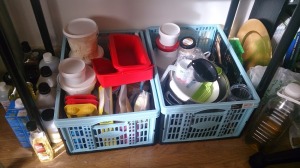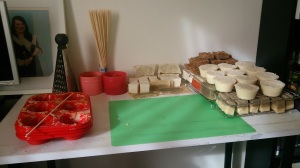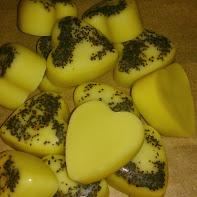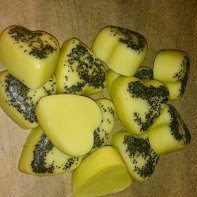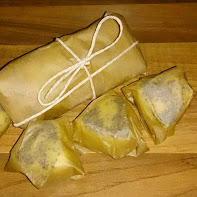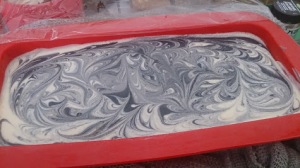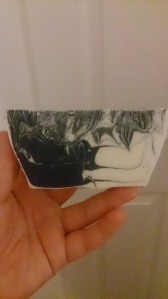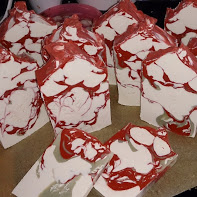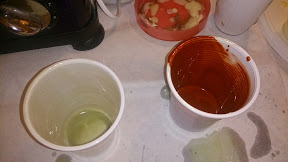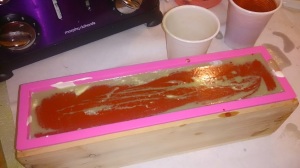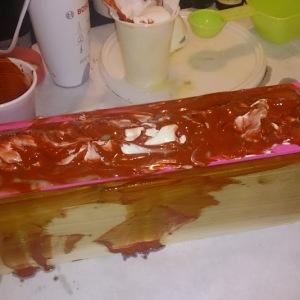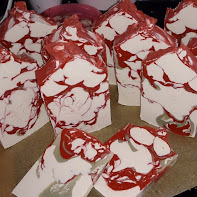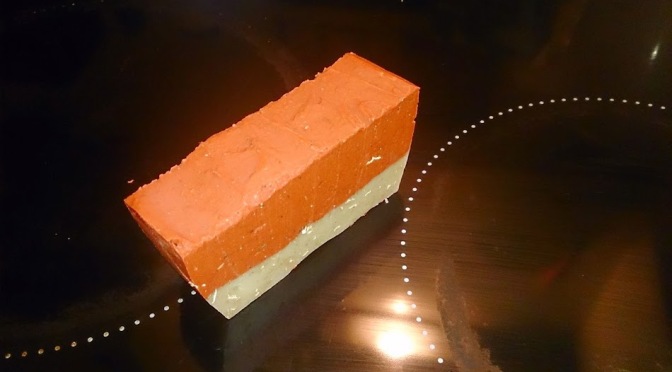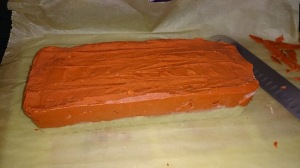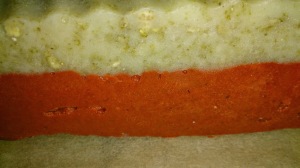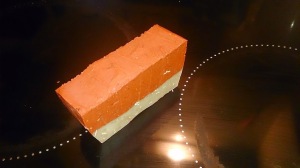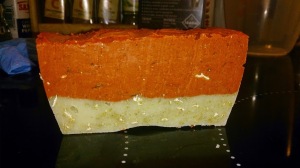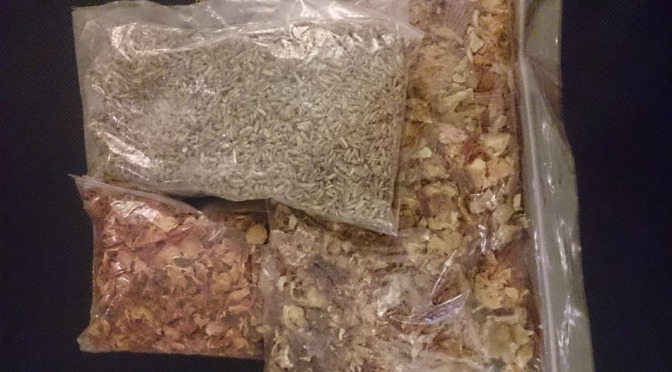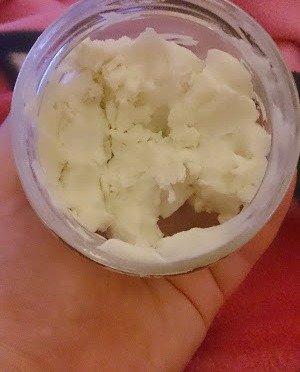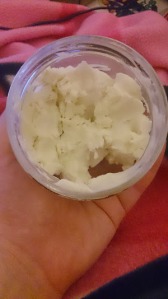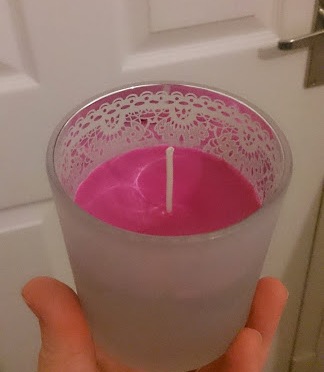So I don’t this has been mentioned but I’m pretty determined to keep everything as natural as possible as I want to gift my products to friends, colleagues and family and really don’t want them having nasty reactions to them. So I figure that is less likely the more natural a product is. Yes, I know people can still have allergies to natural things but I’m doing my best.
I wanted to find natural colouring additives for my soaps and cosmetics… Again, to the internet! I found many, many different ways to colour my products and I am going to share as many as I can with you here. I found most of them on ebay and amazon.
MICAS AND IRON OXIDES

Micas and Iron Oxides are useful “safe” ways to colour soaps and other cosmetics. It is however useful to read up on them before putting them on your skin. They are mostly used for ascetic purposes in soaps and cosmetics, though some so have specific purposes. Like I said it’s useful to read up on them before putting them in products.
CLAYS

These are most useful in soaps as they add subtle colour and add slip to the finished product. Some specific clays have their own wonderful properties so it’s worth researching them before use. I’m currently in love with rhassoul clay. It’s a grainier clay giving an exfoliating quality and a ruddy brown colour to soaps. Clays are also high on the list of fab ingredients for face masks, scrubs and mineral make-up.
HERBS
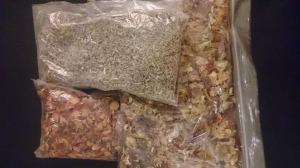
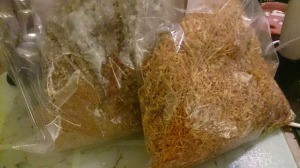
Dried herbs are fabulous in and on soaps. Above is rose buds and petals, lavender buds, mallow flowers, chamomile flowers and calendula petals. All of these carry various qualities in cosmetics and give a very luxurious touch to lotions and soaps. You must beware of dried herbs and flowers in soaps though as mentioned in my first soaping post, they don’t often turn out as expected!! So far the only dried herbs/flowers I have found to work IN soap is calendula, which thankfully keeps its lovely yellow colour, without bleeding or looking like something from a mouse’s bottom! Another herb which works well is alkanet root which is useful for colouring soap purple. I have infused it in olive oil and will substitute it for some of my olive oil from my batch to colour the soap – that adventure is yet to come!
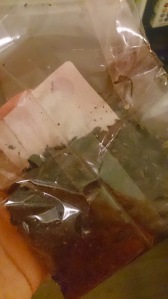
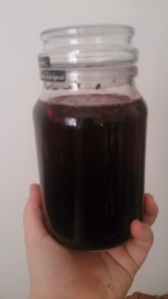
I have also infused calendula in olive oil for use in lotions.
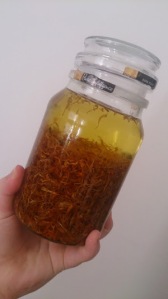
ACTIVATED CHARCOAL

Activated charcoal is excellent for drawing out toxins from the skin, making it a very welcome additive in soaps, face masks, face and body scrubs, as well as being a natural way to colour your product – and your bathroom – coal black.
TITANIUM DIOXIDE
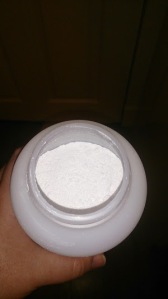
Titanium dioxide is used for colouring soaps and cosmetics – yup, you guessed it! – white!! As far as I am aware it does not have any other skin benefits but feel free to correct me.
FOOD
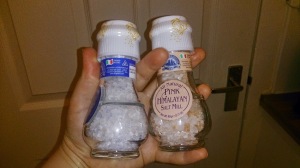
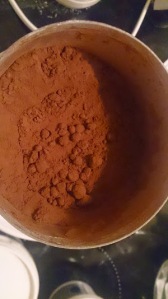
I’ve recently been experimenting making spa bars out of various fancy salts – once they have cured I will post a full update on how they work! I also recently read that cocoa powder is an excellent additive for soap as it adds colour and a subtle scent which could, in theory, negate the need for fragrant and essential oils, making the finished product kinder on the skin. It is also possible to use pulverise veggies in soap but I have not yet been brave enough to try. Other foodie additives include teas, beer and milks, which all must be allowed to cool and flatten before being frozen then used as substitute for the water in the lye solution – more on this later.
ESSENTIAL OILS
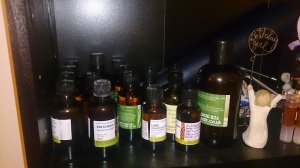
These all have their own qualities they have for products and all have beautiful scents which can add wonderful dimentions to your soaps, lotions, bath bombs etc. Again I must stress everyone should read up on the pros and cons on the essential oils they use as they are not all suitable for all products.
These are all the additives I currently have in my soaping area, and to be fair, I’m not sure I could fit any more, even though I SOOO want to!!
